Important information regarding updates
We have originally published this article on March 18th, 2020 and since it had a great response, we kept on updating in with the latest information regarding 3D printed protective shields. Our open-source shield design became popular among 3D printing communities and people in the whole world joined forces to bring these shields to frontline staff – to medical professionals, firemen, police officers… to everyone who needed one. It’s an amazing community-driven effort.
People keep finding new ways to help. Many of you started printing these shields, those without 3D printers help with production of the visors, others are remixing the current design to improve its features.
We would like to express our sincere thanks to everyone who participates in this effort! 3D printing communities are truly amazing!
To make the navigation in this article a bit easier, we have added a list of contents. You can also find more detailed information and a timeline on Prusa3d.com.
Table of contents:
- Prusament PETG Orange for PPE
- US shield design available
- Community Groups and headband cover
- RC3 Version
- Feedback we received
- RC2 Update
- From design to mass 3D printing – the original article
2.4 Introducing Prusament PETG Orange for PPE
In reaction to the acute shortage of Personal Protective Wear (PPE) for frontline staff, many people started producing PPE on their own using 3D printers. To support makers all over the world, we decided to add Prusament PETG Orange for PPE to our e-shop. It’s a heavilly discounted high-quality PETG material, which is perfect for production of these shields (the headband and chin parts). It still has the same composition as our standard Prusament PETG Orange and we’ve been using this type of material on our printing farm for a long time.
Since we wanted to speed up the production and get the material to our customers as quickly as possible, we lowered the manufacturing precision from our usual ±0.02mm to ±0.03mm and the winding is not as perfect as on standard Prusaments.
2.4. The difference between US and EU shields
We have released a slighly modified version of the shield, which is more suitable for the US – the design was adjusted to fit American size sheets (11×8.5”) and American triple hole punch (distance 4 1/4”, hole radius 1/4”). Print files and more info are available at PrusaPrinters.org
30.3. Groups and headband cover
We’ve released GROUPS on PrusaPrinters. You can share information, collaborate and help others with (not only) the production of protective shields. You can learn more about groups in our article.
We’ve also released a cover for the headband, which is useful for very high-risk environments as they provide even better protection.
Finally, we’ve released speed optimized print files for the RC3 stacked version.
26.3. version RC3
We’ve created a new page, where you’ll find all the information about the 3D printed Face Shields – https://www.prusa3d.com/covid19/
Sterilizing / disinfection guide – we’re updating this guide with lab testing results. We even have lab testing with live coronavirus in progress. Huge thanks to all labs and hospitals that help us verify disinfection methods!
We’ve also released the RC3 version (download here) – changes from RC2:
- Removed hexagonal holes for faster printing speeds
- With faster printing we use on our farm, some pieces had sharp points and based on testing, the venting is not needed as much
- Several optimizations for stack printing
- New print files with 4 headbands stacked on top of each other
- Stacking headbands is a great idea by the community, especially useful for overnight printing
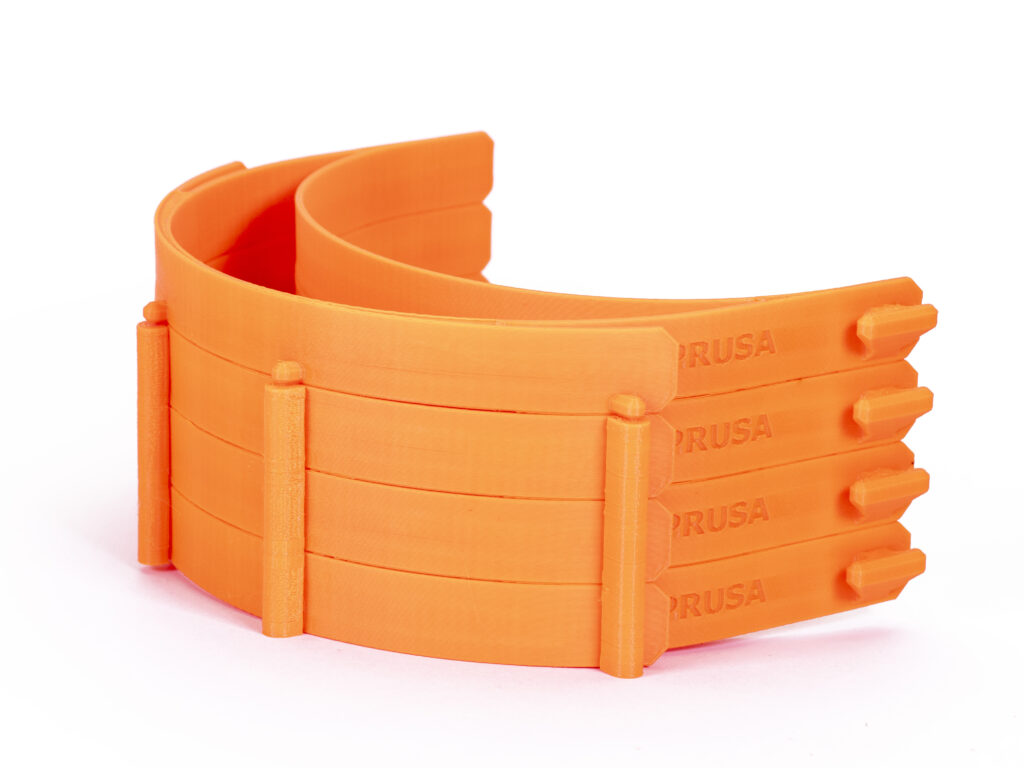 A stacked version of the RC3 headbands, especially useful for overnight printing
A stacked version of the RC3 headbands, especially useful for overnight printing
24.3.
The 3D printing communities all around the world are printing Face Shields for local medics, this is amazing! And we’ve donated over 10 000 Face Shields🎉 We keep getting awesome feedback and are already testing the RC3 version, stay tuned for more updates!
20.3. – update RC2
I’ve promised I’ll keep you updated and a lot has changed since the release of our face shield 48 hours ago, so let’s get into it.
As soon a the word got out about our face shield, we’ve received dozens of requests from local hospitals, ambulances, firefighters, dentists, senior houses… the list goes on. We’ve distributed the current stock as best as we could (over 1000pcs) and collected a great amount of feedback. Based on that we’ve re-designed the printed parts.
Differences between RC1 and RC2:
- Increased wall thickness (slightly stiffer and more durable)
- Inner wall from 1.5 mm to 2 mm
- Outer wall from 2 mm to 2.5 mm
- The headband is no longer printed compressed
- Lower pressure on the temple
- The visor was moved further away from the forehead
- This allows a better fit over bigger respirators and protective goggles
- The printed part now has an extension for the visor (the visor curves less than the headband)
For now, both RC1 and RC2 versions are relevant. RC1 lets you fit more printed parts on a single print bed. However, if the maximum yield isn’t the priority, RC2 provides slightly better protection and is more comfortable to wear.
If you want to manufacture shields for others
PLEASE READ THIS CAREFULLY
- Act as if you were infected by the COVID-19 virus. Wear a face mask and a fresh pair of gloves when collecting each batch of printed parts. Store the parts immediately in a sealable bag.
- Talk with whoever you’re making the shields for, let them know about your manufacturing environment
- There is still debate about how long the virus survives on plastic, but most sources mention 2-3 days. That means that by letting the packed face shields sit for 2-3 days before distributing them, you’ll greatly reduce risk of transmission
- Do not store the entire stock in one place, minimize the risk of cross-contamination
From Design to Mass 3D printing of Medical Shields in Three Days
Hello everyone, times are tough so I will keep this short and to the point. The 3D printing community is amazing! We are all problem solvers and enjoy building things not only for our lives but also for others. In the past few weeks, we have received many messages with respirator designs, medical ventilators and other devices (that are missing in hospital’s warehouses right now) – you are looking for ways to help with this global pandemic and that’s a great thing. The worldwide demand for these devices is so huge, that in some countries, even doctors don’t have access to masks and face shields, so they have to undertake a huge risk and work without protective equipment. I am extremely proud of the whole 3D printing community and want you all to keep going!
We here at Prusa Research are also looking for ways to help. We have been doing a lot of research and I want to address some of my concerns about printed respirators first before we move to the main story. I don’t intend to hamper the vibe we have now – not by a long shot, but printing respirators might not be the best idea at this time. Let me explain.
None of the designs available right now have been tested to ensure they provide the protections needed, at least none of the ones I am aware of. To help with this, we have collected as many designs as we could find, and are working with experts to see if we can verify which ones really work. What are the key focus points? First, it’s the sealing, then the filter itself, the filter to the mask, and how the mask attaches to the face – it all must be perfect. Most of us print rigid materials that are hard to make compliant for seals. Even if we can get a good seal, will it remain functional e.g. even when the wearer talks?
Another question we need to take into account is the porosity of the printed parts and the safety concerns that come from that. The wearer will have the mask on their face, a humid and warm place, a perfect breeding ground for germs. We won’t be able to sterilize these masks effectively so we might be causing even more problems. And the virus reportedly survives for over 48 hours on the plastics (or even 90 hours, according to some other studies). We all want to help our friends and families which means we should be all the more precautious to keep from hurting them. If you absolutely insist on printing a mask now, treat it like it is a basic surgical mask and not as a true respirator with all the protections they provide. A false sense of security can be very dangerous. I understand you’re trying to help, but PLEASE spread this info into your 3D printing groups.
Making 3D printed protective shields
So even though 3D-printed respirators need some more work, it doesn’t mean that we wouldn’t be able to put our personal factories to good use right away. In our research, we’ve been looking for other protective gear, which we can produce safely – and the one we have focused on is a protective face shield for medical professionals. We were notified on Facebook that doctors are in great need of face shields and that there is already a great face shield design available online. We took it as a starting point and decided that we would adjust it for easier and faster 3D printing – e.g. there shouldn’t be any supports required and we should fit as many of them onto a single print sheet as possible. So we started working on it immediately. After all, it is very important to keep the guys, who will take care of us in the darkest times, as healthy as possible. These shields will help protect their eyes and face from coughing and sneezing of their patients.
In three days, we were able to go through dozens of prototypes, two verifications with the Czech Ministry of Health and we even met our minister of health Adam Vojtech. Today we are excited to share with you that we have started prototype production and the first units just went to the hospital for field testing and verification. I want to thank Martin Havrda from the University Hospital Vinohrady in Prague for taking the time to meet us. And also, when we have this design verified, we will move to design protective goggles.
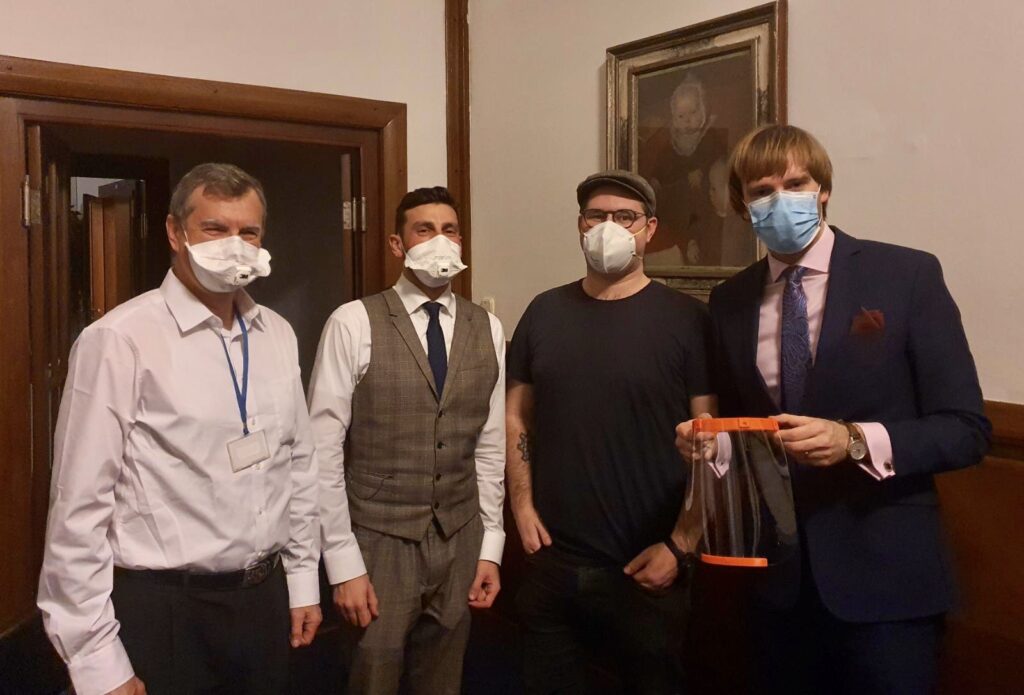 Presenting the prototype to the Czech Minister of Health Adam Vojtech
Presenting the prototype to the Czech Minister of Health Adam Vojtech
Thanks to our 3D printing farm, the largest in the world with over 500 3D printers, we are able to produce 800 pieces a day. Even at this rate, the farm is not actually being utilized fully for this project, only 1/5th of the printers are being used for this as we are bottlenecked by our laser cutter’s capacity to cut the clear visors. If we remove this bottleneck we could theoretically produce up to 4000 pieces a day. For now, this doesn’t affect our normal production and if we need we can add more 3D printers to the production. After all, we are world record holders with 1096 concurrently printing 3D printers, so capacity shouldn’t be a problem :-).
The materials required to manufacture one unit are less than $1 and that is without any quantity discounts when buying. We literally got materials around Prague during one afternoon.
As a starting point, we are donating 10.000 units to the Czech Ministry of Health and we are now sourcing more materials.
The design can be printed relatively safely by individuals after verifications in lower numbers to help local communities too.
 Protective shield parts being printed on our 3D printer farm
Protective shield parts being printed on our 3D printer farm
I want to get this to as many people who need it as soon as possible, around the world. If you guys have the tools and capacity for it, you can start preparing now, even before we have the final design. It’s a great time to give your printer a tuneup and to stock up on materials so you are ready to start printing as soon as we release the designs. I think most makerspaces should have the tools needed: a 3D printer, a laser cutter, and scissors – that’s all you need! Please keep in mind this is RC1 (release candidate), which still needs to be fully verified, but I will regularly update this article with new findings. So bookmark this page (I will be also tweeting out the updates.) if you want to help out.
Safety and sterilization and verification
The big question is the sterility of the production environment and the finished parts. You really don’t want to make things worse by producing things meant to fight the disease, while accidentally spreading it. ALWAYS check with a professional to ensure your setup or production is up to their standards and don’t be offended if they are cautious to accept your help. I cannot stress this enough, don’t make things worse and don’t create more trouble for those who are working so hard to keep us all safe and treat those who are sick.
Keep in mind that the virus can live on the plastic for 48-90 hours and plastics cannot be easily sterilized after use. So they are one-use only, at least until we find a way to reliably sterilize the printed parts!
Here are the precautions we are taking (these also apply to other 3D printed designs out there) and they are still pending validation – always check for updates of this article.
- The plastic is heated up to a high temperature during printing pretty much sterilizing the printed part, don’t let the part sit on the bed for hours where it can be contaminated again. Wear a fresh pair of gloves and surgical mask before removing the prints and put it directly into a fresh sealable bag. In our farm, we have the air completely exchanged every 2 minutes and it is filtered, this greatly helps reduce anything harmful in the air.
- When lasering the clear shields, leave the protective foils on so it can be removed before assembly and use. This greatly reduces any possible contamination. Also, pack it as an entire batch your laser can make at a time. Our laser can make 40pcs in one go, so when we open the laser, we collect all of them at once – again in fresh gloves while wearing a surgical mask. We put them into a sealable bag immediately. If your laser can only produce one at a time, make sure you are wearing fresh gloves for each part you produce.
- When cutting the elastic, we also wear gloves and surgical masks. Do not unpack more than you need to work on, reducing exposure to the air will reduce contamination.
Dentists from the Astella Clinic in Prague are among the first to test protective shields in practice
Design
As I mentioned before, the design is still pending verification in the field and will probably change over the course of the next day or two. The design will be appropriately updated on the PrusaPrinters. Right now it is completely safe to make one only for yourself!
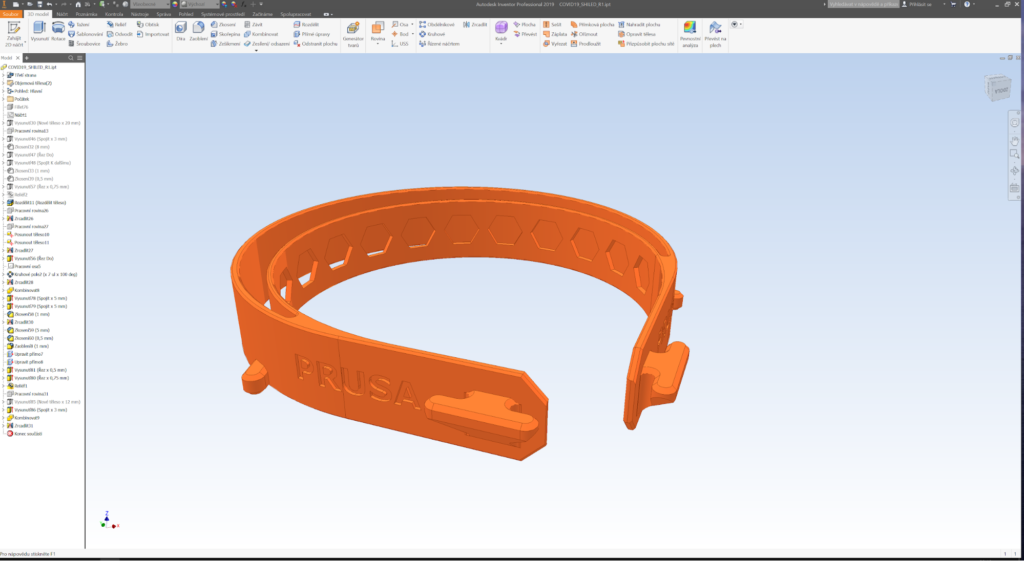 Designing the headband part of the protective shield
Designing the headband part of the protective shield
Some designs are available online right now, but they are usually very inefficient in utilizing the area of the printer’s surface. We had to start designing parts from scratch and we are able to fit 4 on the regular Original Prusa i3 MK3S bed, greatly increasing the farm’s efficiency. We took advantage of the properties of the plastic, designing the part compressed (bent) which helps with a snug fit on the head.
 4 pieces nested on the printbed
4 pieces nested on the printbed
We also found great elastic fabric with even spaced 10mm holes in the middle, greatly improving the adjustability. But pretty much anything similar can be used by simply cutting a 10mm hole in the fabric. We use a hot wire to cut the fabric which prevents the ends from fraying, but scissors and a lighter to melt the ends can be used too. A thick rubber band can be secured by making a knot with a loop.
 We took one of our automatic cutters we use for making fabric shields for MK3S wire harnesses and repurposed it for the new task
We took one of our automatic cutters we use for making fabric shields for MK3S wire harnesses and repurposed it for the new task
For the clear sheet, any clear laser cuttable plastic can be used – thickness ranging from 0.5mm to 1mm is recommended. The holes are the same size as produced by regular office hole punch and plastic can be cut by hand with scissors while using our design as a template. Even the plastic from a 2-liter bottle with straight sides can be used if there is no other material available.
Other ways to help the pandemic with 3D printing
 We also launched a new quick design competition for other 3D printable designs. The main goal is to quickly produce everyday necessities that might run out during quarantine, or they may save you from a potentially unsafe trip to the store. Things that you might also find useful when life gets back to normal.
We also launched a new quick design competition for other 3D printable designs. The main goal is to quickly produce everyday necessities that might run out during quarantine, or they may save you from a potentially unsafe trip to the store. Things that you might also find useful when life gets back to normal.
And one more thing. We assume that there are hundreds of projects like ours run around the world right now. If you are a part of any of them, please, e-mail us at [email protected] – we are especially interested in designs that have been proven to work (e.g. medically approved, used in the field, etc.). We will be happy to share all tested and approved tools on PrusaPrinters!
That is it for now, thank you all for your continued support and inspiration. This community is such a great example of what humanity can do when we all work together towards common goals. Keep being awesome!







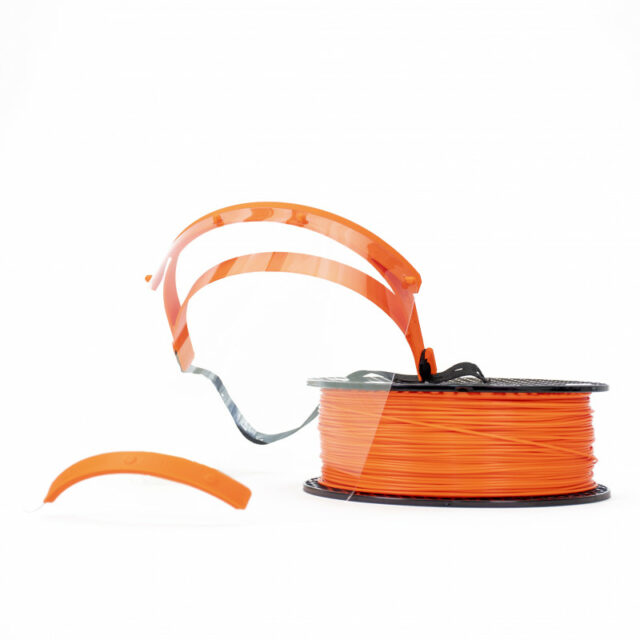
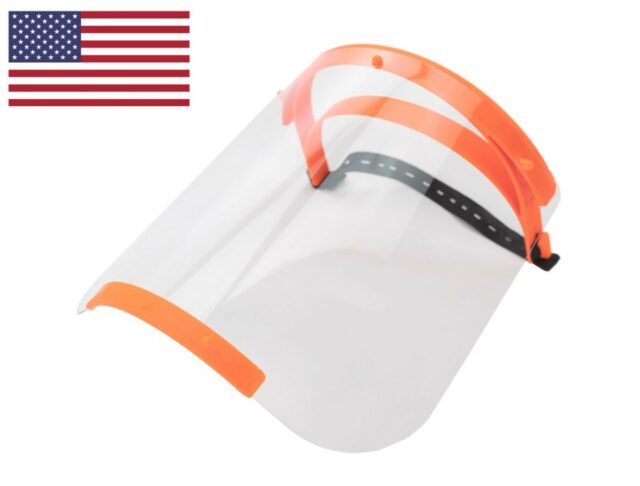
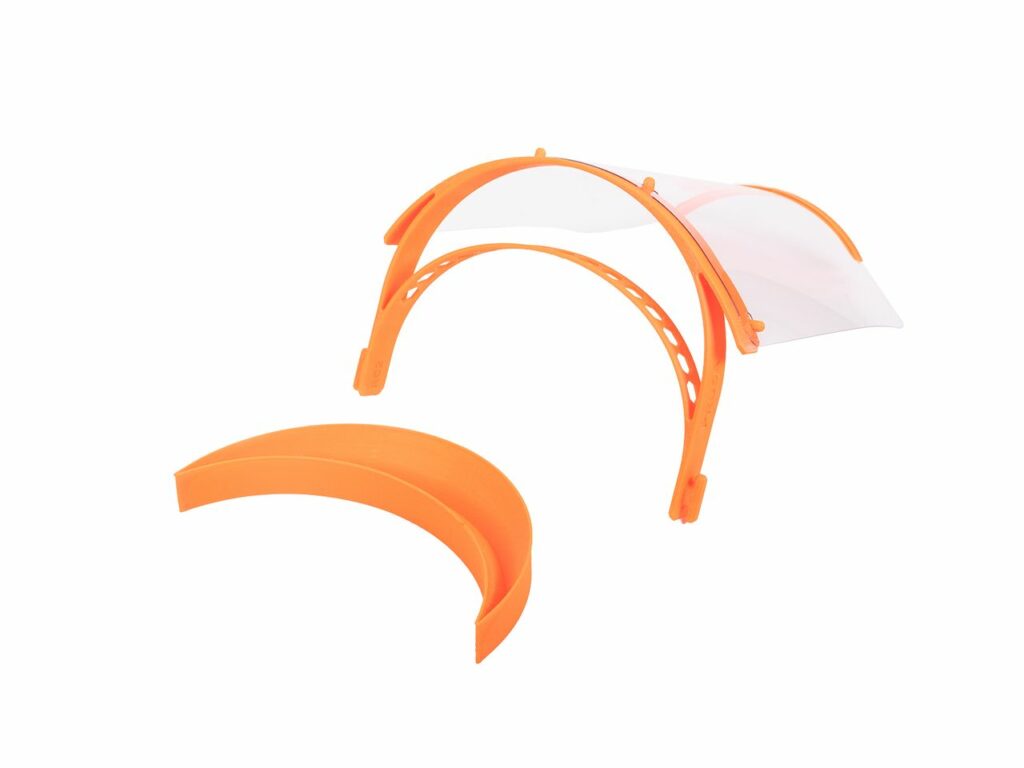
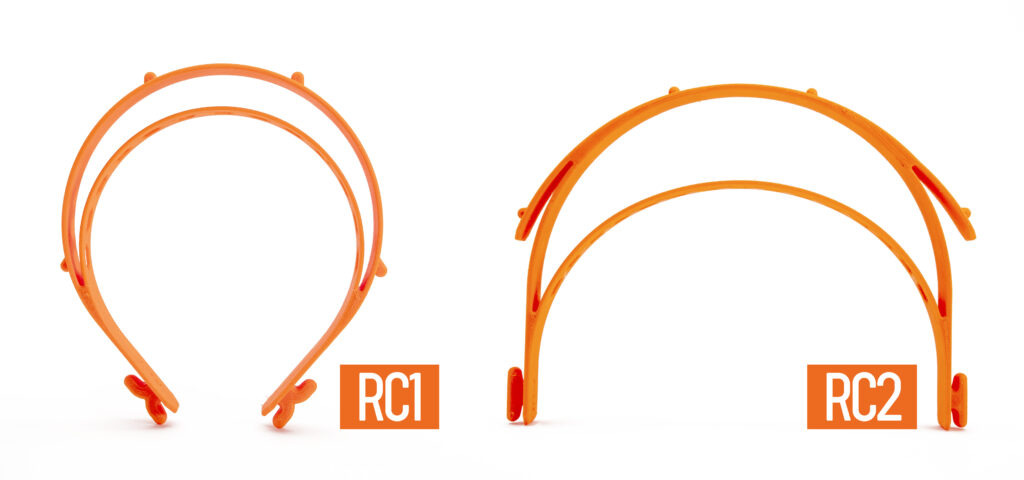
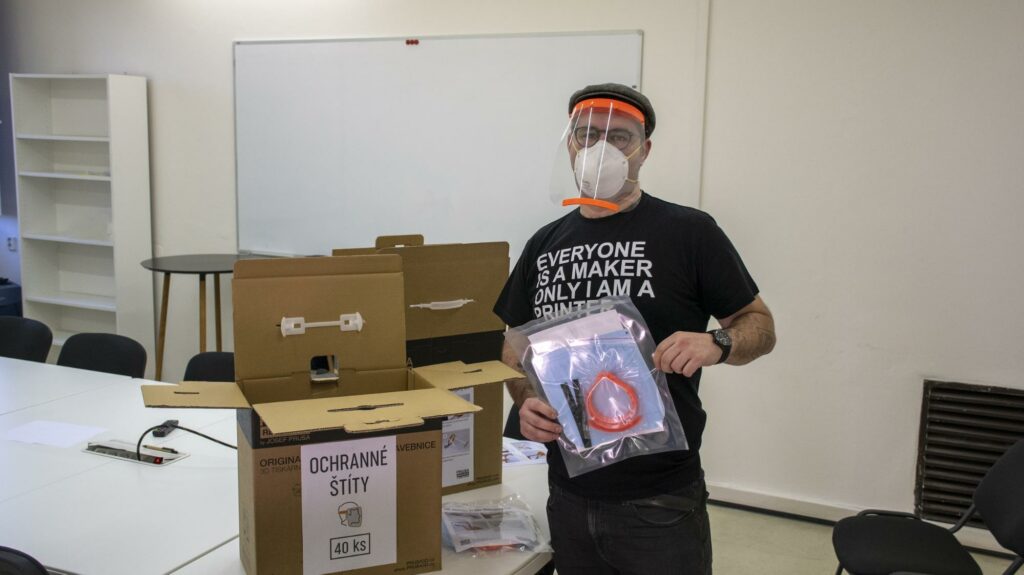
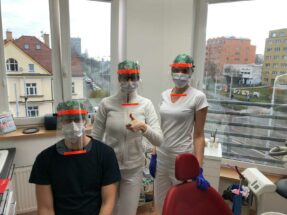
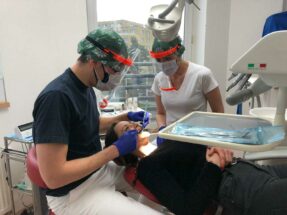
コメントを投稿するにはログインしてください。